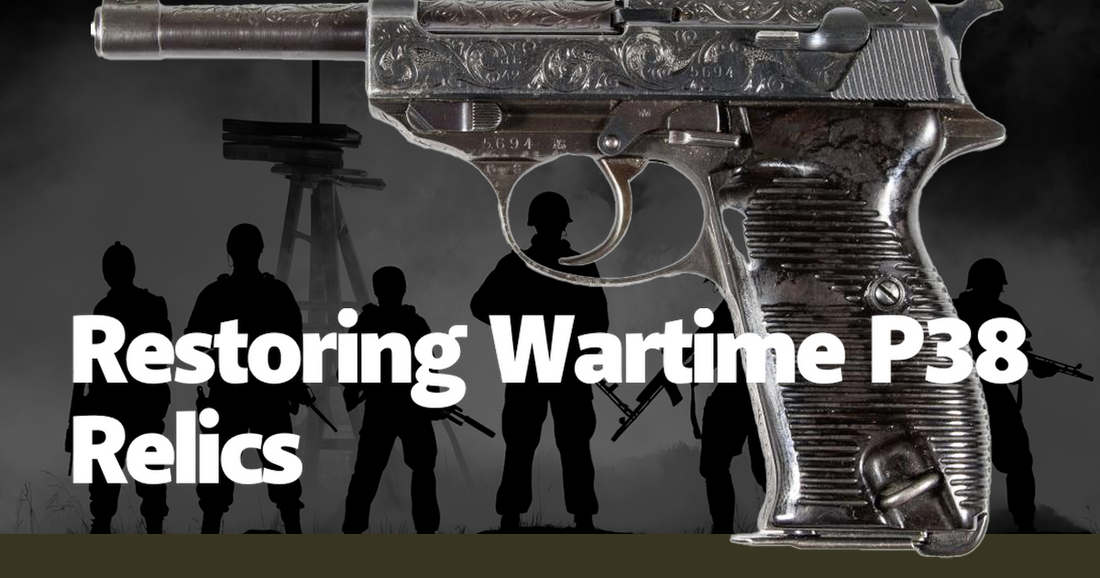The restoration of wartime P38 relics is a labor of love that intertwines history, craftsmanship, and a deep respect for the sacrifices of those who served. The P38 Lightning, an iconic American fighter aircraft of World War II, symbolizes both technological innovation and the bravery of the pilots who flew them. Restorers often find themselves uncovering relics in various states of decay, from sunken wrecks in the Pacific to forgotten airfields in Europe. Each piece tells a story, and the meticulous process of restoration is akin to piecing together a historical puzzle, where every rivet and panel holds significance.
One poignant example is the restoration of a P38 that crashed in the jungles of Papua New Guinea. Discovered by a group of aviation enthusiasts, the aircraft was a time capsule, its aluminum skin corroded but still bearing the faded insignia of the United States Army Air Forces. The team faced the daunting task of transporting the wreckage through dense jungle, a journey that mirrored the harrowing experiences of wartime recovery missions. Upon arrival at the restoration site, the real work began—cataloging every piece, assessing damage, and sourcing original parts or fabricating new ones to exact specifications.
The restoration process is not merely about returning the aircraft to a visually appealing state; it is about authenticity and honoring the past. Specialists often rely on original blueprints, maintenance manuals, and photographs to ensure accuracy. For instance, the wiring harnesses in a P38 are recreated using period-correct materials and techniques. This dedication to authenticity extends to the smallest details, such as the cockpit instruments and the paint schemes, which are meticulously researched to match the original squadron markings and camouflage patterns.
Anecdotes from restorers often highlight the emotional connections they form with the aircraft. One restorer recounted the discovery of a pilot’s personal effects in the wreckage—a dog tag, a weathered photograph, and a letter. These items, preserved for decades in the wreck, provided a poignant reminder of the human stories behind the machinery. Such discoveries add a deeply personal dimension to the restoration work, transforming it from a technical endeavor into a tribute to the individuals who flew and maintained these aircraft.
The challenges faced during restoration are numerous and complex. Corrosion, structural damage, and the scarcity of original parts are just a few of the obstacles. Restorers often collaborate with museums, private collectors, and other enthusiasts to locate the necessary components. For example, the restoration of a P38’s twin Allison V-1710 engines often requires parts that have not been manufactured for over seventy years. This scarcity has led to a thriving community of specialists who reproduce these components using a combination of traditional craftsmanship and modern technology, such as 3D printing.
One of the most significant achievements in the restoration community was the resurrection of “Glacier Girl,” a P38 that was part of the Lost Squadron, which crash-landed on Greenland’s ice cap in 1942. Buried under 268 feet of ice, the aircraft was recovered in the 1990s after a herculean effort. The restoration took over ten years, involving the complete disassembly and reassembly of the aircraft. Today, “Glacier Girl” is not only a flying testament to the ingenuity and perseverance of its restorers but also a living museum piece that educates and inspires.
The educational aspect of P38 restoration cannot be overstated. Restored aircraft often become centerpieces in museums, air shows, and commemorative events, providing the public with a tangible connection to history. For many, seeing a P38 in flight is a powerful experience, bringing to life the stories of the men and women who served during World War II. These aircraft serve as mobile classrooms, where veterans, historians, and aviation enthusiasts can share their knowledge and experiences with new generations.
The legacy of the P38 Lightning and the efforts to restore these wartime relics extend beyond the aircraft themselves. They represent a broader commitment to preserving history and honoring those who served. Each restored P38 is a testament to the resilience and ingenuity of the Greatest Generation, a symbol of the technological advancements of the era, and a reminder of the sacrifices made in the pursuit of freedom. The dedication of restorers ensures that these stories continue to be told, and that the lessons of the past remain relevant for future generations.
In conclusion, restoring wartime P38 relics is a multifaceted endeavor that combines technical skill, historical research, and a deep reverence for the past. It is a process that brings history to life, allowing us to connect with the experiences of those who lived through one of the most challenging periods in modern history. Through the efforts of dedicated restorers, the P38 Lightning continues to soar, not just as a marvel of aviation engineering, but as a living tribute to the courage and sacrifice of those who served.

